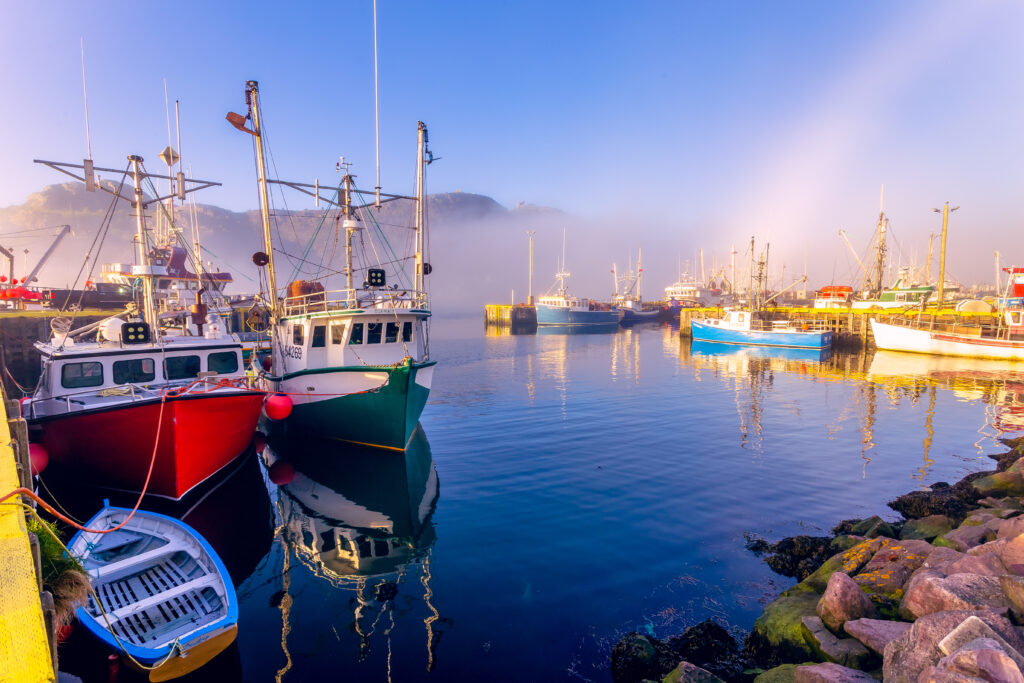On July 2, 1992, federal fisheries minister John Crosbie made a televised announcement that commercial cod fishing was banned on the East Coast of Canada for at least two years. More than thirty years later the ban remained in place as the anticipated recovery of fish stocks did not materialise within the expected period.
Cod stocks off the province’s northern and eastern coasts were collapsing, and the moratorium was introduced as a way to help them recover. Before then, the cod fishery was a primary economic driver in the province, and the moratorium put tens of thousands of people out of work.
After 32 years of closure, the Government of Canada has announced the return of the commercial Northern cod fishery in Newfoundland and Labrador.

“Ending the northern cod moratorium is a historic milestone for Newfoundlanders and Labradorians,” said federal Fisheries Minister Diane Lebouthillier in a news release at the end of June, 2024. “We will cautiously but optimistically build back this fishery with the prime beneficiaries being coastal and Indigenous communities throughout Newfoundland and Labrador.”
Last year, AP reported, Fisheries Department scientists announced they had used new modelling showing the cod stock was out of the “critical zone” for the first time in decades. When a species is in the critical zone, scientists recommend it be left alone as much as possible and that catch limits remain small.
Now the stock is in the “cautious zone,” which means fisheries decisions should still prioritize regrowth. The total catch of 18,000 tons for the 2024 season is just a fraction of what it was — 120,000 tons, according to a government website — in February 1992, just months before the moratorium.
Long term decline
North Atlantic cod stocks had been dwindling for at least three decades before the ban, as fishing technology led to unprecedented harvests that outpaced the cod’s ability to regenerate. Northern cod, one of Canada’s many Atlantic cod populations, was once the backbone of one of the world’s largest fisheries, with hauls in excess of 800,000 tonnes in the late 1960s.
Canadian Geographic has said that scientists believe cod stocks likely started falling even earlier, at the turn of the century, when steam-and diesel-powered ships gave fleets the power to fish in any weather and to venture farther from shore than ever before. In the 1920s and ’30s, Newfoundland’s cod industry employed more than 65,000 people and bringing in more than £2.5 million in 1928-29 (the equivalent of $265 million dollars in today’s terms).
Two decades later, the mammoth 60-metre factory-freezer trawlers of the 1950s and ’60s cast their sweeping nets and fished the very heart out of the stock (see page 30). By the end of the 1960s, cod stocks were on the decline. And though quotas were put in place starting in the 1970s, the hoped-for recovery never happened. In the early 1990s, nets were coming up shorter and shorter — northern cod were on the brink of extinction, and the federal government’s hand was finally forced.
The moratorium didn’t mean Northern cod haven’t been fished since 1992. Inshore, small-vessel (maximum 65 feet, or about 20 metres) fishers have been allowed to catch cod most years since 1998. Since 2006, the Government has also allowed a recreational fishery each summer as cod migrate inshore, and a seasonal Indigenous food, social and ceremonial fishery.
“I didn’t take the fish out of the goddamned water!”
The 1992 cod moratorium is Canada’s single largest industrial layoff, affecting more than 30,000 people in Newfoundland and Labrador, from fishers to ship builders to cannery workers, and ultimately led to a 10 per cent decline in the province’s population as young residents left to find work elsewhere.
There was social unrest and protest when the ban was announced, with all sides accusing one another of mis-management. John Crosbie, who was federal fisheries minister at the time, famously said while addressing angry fishers, “I didn’t take the fish out of the goddamned water!”